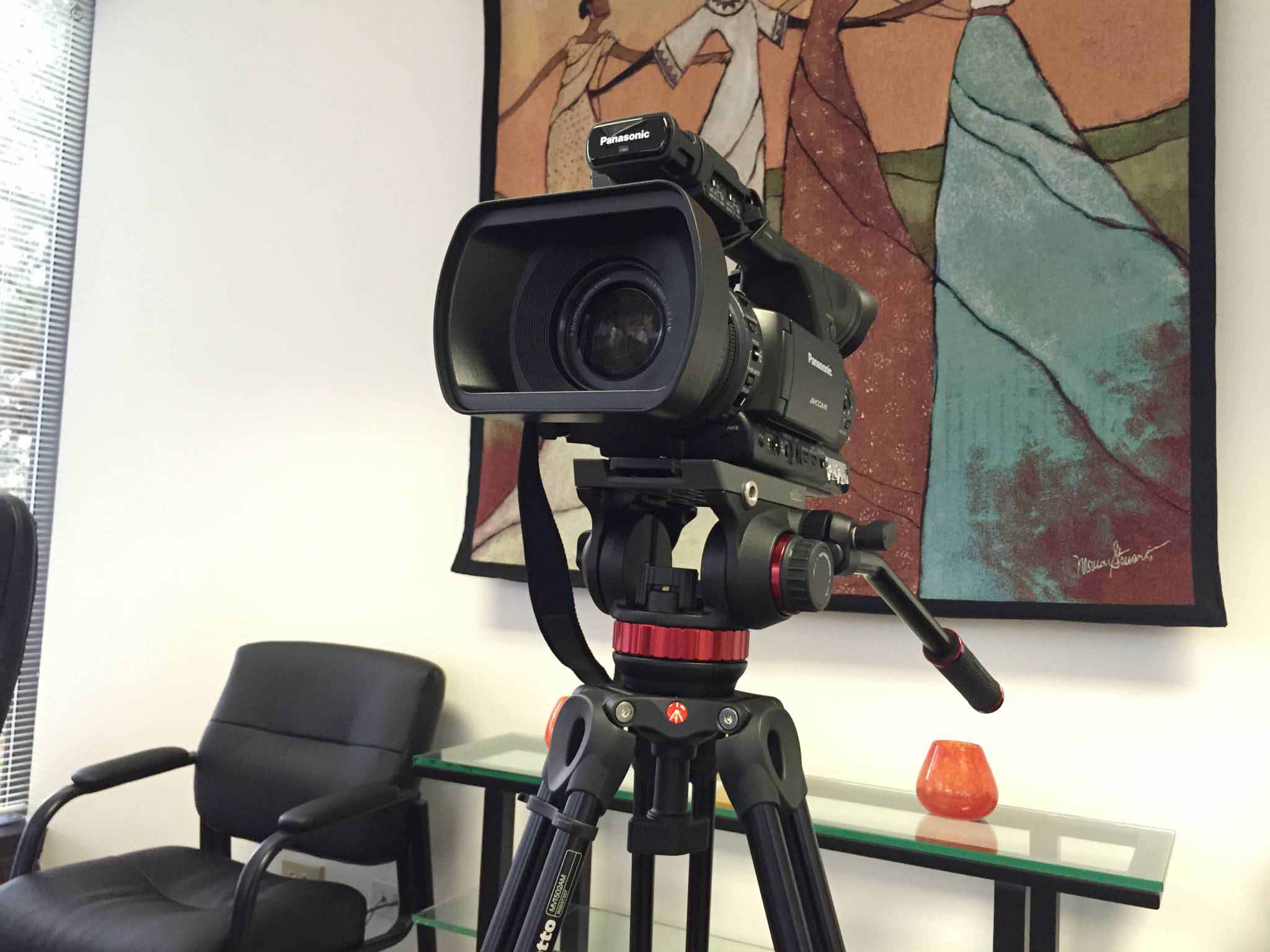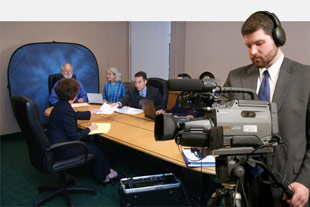Exploring the Systems of Lawful Videography: Unveiling Its Operation in Safeguarding Genuine Visual Statement for Judicial Procedures
In the realm of judicial procedures, the role of legal videography stands as a cornerstone in maintaining and providing visual evidence. As innovation remains to breakthrough, the devices behind legal videography have actually come to be increasingly complex, offering an essential layer of credibility to testimonies caught on video clip. By delving right into the operational details of lawful videography, one can discover the meticulous processes that safeguard the honesty of aesthetic evidence provided in courts - Legal Videography. This expedition not just drops light on the historic development of lawful videography however likewise hints at the future fads that may further reinvent how aesthetic testimonies are promoted in the world of justice.
Historical Evolution of Lawful Videography
Analyzing the historical development of legal videography exposes a considerable improvement in the recording and presentation of visual evidence within the legal landscape. In the past, legal procedures heavily relied upon composed photographs and transcripts to document occasions and supply evidence. However, with the development of video innovation, the lawful industry saw a standard change in how aesthetic testimony was captured and provided.
The advancement of lawful videography can be traced back to the late 20th century when improvements in video recording devices made it a lot more easily accessible for use in courtrooms. This technical development not just boosted the precision and reliability of visual evidence yet additionally transformed the way cases existed to juries and judges (Legal Videography). Lawyers began to identify the persuasive power of video recordings in conveying emotions, nuances, and non-verbal signs that composed photographs or records alone can not record effectively

Innovation Improvements in Video Clip Paperwork
What crucial technological developments have transformed video documentation in the lawful area? The legal field has seen substantial advancements in video documents innovation that have actually improved the credibility and integrity of aesthetic evidence in judicial proceedings. Among the key improvements is high-def (HD) video recording capacities, which offer crystal-clear pictures and sharp details that are crucial for properly recording statements, facial expressions, and other aesthetic signs. In addition, the combination of timestamping and metadata features in video clip paperwork devices has actually enabled specific paperwork of when and where the video clip was taped, making sure the integrity of the proof provided in court.
Furthermore, innovations in video file encryption and watermarking technologies have actually strengthened the safety and tamper-proof nature of video clip proof, safeguarding it against unapproved alterations or meddling. The arrival of cloud storage options and remote access capacities has streamlined the storage, retrieval, and sharing of video clip proof, facilitating smooth cooperation amongst legal professionals visit and making sure efficient access to essential visual statements when needed. These technical innovations in video clip documents have unquestionably reinvented the lawful area, boosting the precision, integrity, and admissibility of visual evidence in judicial procedures.
Role of Legal Videographers in Court Settings
The advancement of video clip paperwork technology in the lawful field has required an important role for lawful videographers in courtroom setups, guaranteeing the integrity and integrity of visual statements presented throughout judicial procedures. Lawful videographers play a basic duty in catching and maintaining precise visual proof that can be essential in court situations. Their obligation reaches establishing devices, videotaping process, and creating high-quality video clips that properly reflect the events in the courtroom.
In addition, lawful videographers frequently work very closely with legal teams to ensure that the video proof aligns with the situation's demands and can be efficiently offered in court to support the legal arguments being made. On the whole, the duty of lawful videographers in court room setups is essential in maintaining the concepts of justice and making certain the transparency of legal process. Legal Videography.

Ensuring Admissibility and Stability of Video Proof
To maintain the reputation of visual evidence offered in legal process, guaranteeing the admissibility and stability of video clip proof is a vital obligation for lawful videographers. Admissibility refers to the acceptance of evidence by the court, and for video proof to be permissible, it needs her explanation to fulfill certain standards. Lawful videographers play a crucial duty in making certain that the video clips they catch comply with the guidelines of evidence, such as authenticity, dependability, and significance.
Stability of video proof includes keeping the originality and accuracy of the find out footage from the moment it is recorded until it is offered in court. This includes firmly keeping the video clip data, documenting the chain of safekeeping, and protecting against any type of tampering or alterations. Lawful videographers have to comply with strict procedures to assure the integrity of the video proof and stop any kind of difficulties to its credibility.
Future Trends in Legal Videography
Offered the increasing reliance on technology in lawful proceedings, legal videographers are positioned to accept cutting-edge innovations forming the future of visual statement capture and presentation. Among the prominent patterns coming up is the assimilation of online truth (VIRTUAL REALITY) and boosted fact (AR) modern technologies into legal videography. These technologies have the prospective to revolutionize how aesthetic proof exists in courts, enabling courts and juries to immerse themselves in the scene of the crime or incident.
Furthermore, the usage of artificial knowledge (AI) formulas for video clip analysis is expected to simplify the process of assessing and analyzing huge quantities of video footage. AI can help in recognizing crucial moments, anomalies, and patterns within video clips, boosting the effectiveness of legal investigations.

Final Thought
Finally, legal videography has actually played a vital role in offering genuine aesthetic proof for judicial procedures. With technological developments and the expertise of lawful videographers, the integrity and admissibility of video clip evidence are guaranteed in courtroom settings. As lawful videography continues to evolve, it will be important to copyright criteria that keep the accuracy and reliability of visual testament for the future of lawful procedures.
Analyzing the historical progression of legal videography reveals a considerable makeover in the capturing and discussion of visual proof within the legal landscape.The development of video paperwork innovation in the lawful field has necessitated a vital function for legal videographers in court room setups, guaranteeing the stability and dependability of aesthetic testaments provided throughout judicial process. Additionally, legal videographers often work very closely with lawful teams to make sure that the video clip evidence aligns with the case's needs and can be effectively presented in court to sustain the legal debates being made.To preserve the trustworthiness of visual evidence presented in legal procedures, ensuring the admissibility and integrity of video proof is an important duty for legal videographers. As legal videography proceeds to progress, it will certainly be necessary to promote criteria that keep the precision and reliability of aesthetic testimony for the future of lawful procedures.